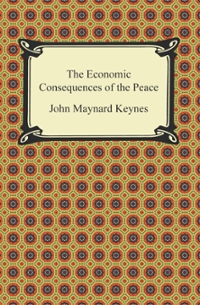Question
Section 1. Multiple-choice questions (1 point x 10 questions = 10 points) Click to cross the box next to the correct answer. For each question,
Section 1. Multiple-choice questions (1 point x 10 questions = 10 points)
Click to cross the box next to the correct answer. For each question, cross only one box. No point will be given for crossing more than one box in answering a question.
Q.1 If everyone in a country had the same level of income, the Gini coefficient would be
a. 100
b. 1
c. 0.5
d. 0
Q.2 The Human Development Index developed by the United Nations Development Program is the geometric mean of three separate indices on health, knowledge and living standard. As compared to the simple mean, the geometric mean can
a. simplify computation and allow us to process a large amount of data rapidly
b. indicate how much each of the three components can affect economic growth
c. increase the level of development at an increasing rate
d. assume that the three separate indices cannot substitute each other perfectly
Q.3 In Arthur Lewis' dual-sector model of structural change, an initially predominantly agricultural economy reaches the so-called turning point when
a. the economy's GDP starts falling
b. labour shortage in the manufacturing sector disappears
c. the flow of labour reverses from the manufacturing to the agricultural sector
d. labour surplus in the agricultural sector is exhausted
Q.4 The poverty head-count ratio can tell us
a. how many people are in poverty
b. what percentage of people are in poverty
c. to what extent each poor household suffers from poverty
d. how much poorer a country is relative to the United States
Q.5 In Robert Solow's model of economic growth, steady-state income per capita increases when
a. the population-growth rate increases
b. the saving rate decreases
c. the steady state is characterised by GNI per capita of US$12,535 or less
d. the rate of capital depreciation falls
Q.6 According to the World Bank, Afganistan's GDP per capita (PPP, constant 2017 international dollars) was $1200 in 2004. It had steadily grown to $2116 in 2013, suggesting that the country had grown at approximately 5.8% annually over the decade if the growth rate were constant. However, over the next 5 years, it had steadily declined to $2058 in 2017. Therefore, over the 5-year period 2013-2017, the country had declined at approximately
a. 0.55% annually
b. 5.5% annually
c. 2.8% annually
d. 0.28% annually
Q.7 Educating people can have positive impacts on our societies when it generates positive externalities. Which of the following is not a positive externality of educating people?
a. A refugee family does not suffer from discrimination in the newly settled community, thanks to the related education the host-community members received.
b. Young people today continue to enjoy natural environments when they are adults, thanks to the environmental education today's adults received.
c. A person avoids HIV/AIDS, thanks to the related education she received at school.
d. An entrepreneur succeeds in his business in a local economy, thanks to the availability of well-educated local workers.
Q.8 Which of the following is not a concern about cap-and-trade schemes for discouraging global carbon emissions?
a. Some countries may be tempted to set their overall emission cap high.
b. Some countries may be tempted to be lenient with economically beneficial polluters.
c. Some companies may not use up their emission permits.
d. The price of an emission permit can fluctuate and may not remain sufficiently high.
Q.9 The Lorenz curve is used to compute the Gini coefficient, an index for income inequality. To draw a country's Lorenz curve, we measure the cumulative percentage of the country's total income on the vertical axis and, on the horizontal axis,
a. the number of workers in the country
b. the cumulative percentage of the country's income recipients
c. the cumulative percentage of people in poverty in the country
d. the Gini coefficient for the country
Q.10 In the wealth accounting approach, a country's development is said to be strongly sustainable if
a. the depreciation rate of natural capital is less than that of any other capital
b. the country's stock of natural capital does not decline over time
c. the country's stock of capital does not decline over time
d. the depreciation of natural capital is completely offset by an increase in human capital
Step by Step Solution
There are 3 Steps involved in it
Step: 1

Get Instant Access to Expert-Tailored Solutions
See step-by-step solutions with expert insights and AI powered tools for academic success
Step: 2

Step: 3

Ace Your Homework with AI
Get the answers you need in no time with our AI-driven, step-by-step assistance
Get Started


